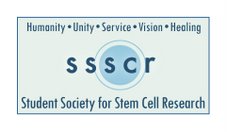Study raises notion of 'printing' tissue, and one day organs
Oct 12, 2007
CHICAGO (AFP) — The inkjet printer may appear to be an unlikely
solution to the organ donor shortage problem, but it might not be as
far-fetched as it sounds.
Scientists have already used inkjet printers to "print" bacteria,
yeast and even human stem cells and they are exploring how to use the
office workhorse to create 3D cell structures in a tissue matrix.
If they can figure out how to create more complex tissues, they will
be one step closer to creating implantable organs, a scientist said
in a paper published in the journal Science Friday.
"We've passed a milestone," said Paul Calvert, a material scientist
at the University of Massachusetts in Dartmouth who has printed human
stem cells. "We've shown that we can print cells and that they
survive the process.
"If we can figure out how to build multiple layers of cells, then
we're one step closer to creating an organ, and the ability to make
functioning tissue -- even in inelegant little lumps would still be
useful."
Teams of scientists in the United States, Britain and Japan have been
using modified inkjet printers to print cells for several years now --
everything from single cell organisms such as yeast to hamster ovary
cells.
They typically empty out the ink cartridges and fill them with
solutions of cells, and reconfigure the appliance so that the nozzle
spews the "bio-ink" on to some kind of growth medium rather than a
sheet of paper.
One of the chief advantages of the technology is that it's a
convenient, noncontact way of depositing patterns of cells.
Subsequent printing cycles don't disturb the material from previous
cycles.
Calvert and his team have already printed "human stem cells."
Their challenge now is to construct simple layered structures to
study the effect of proximity of different cell types on tissue
development, using polymers or gels as scaffolds to separate and
support the emerging tissues.
"If we can grow two different cell types together, we can see how
they communicate,
progress of the field in his Science paper.
The next step would be "to build complex three-dimensional tissues by
printing the right precursors and enzymes in sequence.
Given the right sources of the precursor proteins or compatible
substitutes, we can build many passive structures such as bone,
ligament, cartilage and cornea," he wrote.
The day when scientists can create life-size organs from scratch
using inkjet printers is probably some way off.
"I would be surprised if we could do it in 10 years. I would be
disappointed if we couldn't do it in 30," said Calvert.
But if scientists could create even a sliver of a liver or a heart
this way in a laboratory, those tissues could be used for medical
purposes, such as testing drugs, he noted.
http://afp.google.
«¤»¥«¤»§«¤»¥«¤»§«¤»¥«¤»«¤»¥«¤»§«¤»¥«¤»§«¤»¥«
¯¯¯¯¯¯¯¯¯¯¯¯¯¯¯¯¯¯¯¯¯¯¯¯¯¯¯¯¯¯¯¯¯¯¯¯¯¯¯¯¯¯¯¯
StemCells subscribers may also be interested in these sites:
Children's Neurobiological Solutions
http://www.CNSfoundation.org/
Cord Blood Registry
http://www.CordBlood.com/at.cgi?a=150123
The CNS Healing Group
http://groups.yahoo.com/group/CNS_Healing
____________________________________________
«¤»¥«¤»§«¤»¥«¤»§«¤»¥«¤»«¤»¥«¤»§«¤»¥«¤»§«¤»¥«
¯¯¯¯¯¯¯¯¯¯¯¯¯¯¯¯¯¯¯¯¯¯¯¯¯¯¯¯¯¯¯¯¯¯¯¯¯¯¯¯¯¯¯¯
Change settings via the Web (Yahoo! ID required)
Change settings via email: Switch delivery to Daily Digest | Switch format to Traditional
Visit Your Group | Yahoo! Groups Terms of Use | Unsubscribe
__,_._,___










